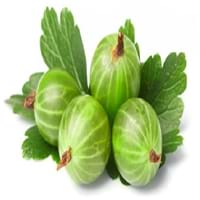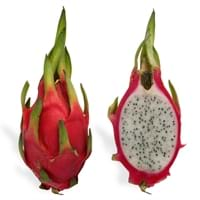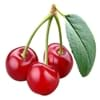Health Benefits
Arthritis prevention, Cancer prevention, Liver health, Scurvy treatment, Ulcer prevention
Anti-oxidant properties, Anti-aging benefits, Maintains healthy cholesterol level, Weight loss properties
General Benefits
Boosts immune system, Digestive aid, Eye care, Fights against infections, Improves blood circulation, Maintains healthy cholesterol level, Sore throat treatment, Treatment of common cold
Helps in weight loss, Suppresses Arthritis
Skin Benefits
Anti-aging benefits, Brightens and lightens complexion, Reduces wrinkles, Treatment of acne
Anti-aging benefits, Heals sunburn, Treatment of acne
Hair Benefits
Prevents hair loss, Promotes longer and healthier hair, Treatment of dandruff
Treatment of colored hair
Allergy Symptoms
Constipation, Diarrhea, Drop in blood pressure, Eczema, Facial swelling, Hives, Hoarseness, Itching, Itchy eyes, Nausea, Red rash, Redness of eyes, Runny nose, Sore eyes, Swelling of mouth, tongue or lips, Tingling sensation in mouth, Vomiting
NA
Side Effects
Gastric irritation
NA
Lactating Women
Yes
Not Available
Best Time to Eat
Best if taken as a breakfast (or empty stomach), As a snack in the late afternoon, Don't consume at night and before bed, Morning time (before lunch)
Any time except an hour after meal, Don't consume at night and before bed
Vitamin A (Retinol)
Not Available
Vitamin B5 (Pantothenic Acid)
Not Available
Vitamin B6 (Pyridoxin)
Not Available
Vitamin B9 (Folic acid)
Not Available
Vitamin C (Ascorbic Acid)
Vitamin E (Tocopherole)
Not Available
Phytosterol
Not Available
Calories in Fresh Fruit with Peel
Calories in Fresh Fruit without Peel
Not Available
Not Available
Calories in Frozen Form
Not Available
Not Available
Calories in Dried Form
Not Available
Not Available
Calories in Canned Form
Not Available
Calories in Pie
Not Available
Type
Berry, Tree fruit
Berry, Citrus, Fruit vegetable, Melon, Tree fruit, Tropical
Season
Summer
Early fall, Summer
Varieties
Whinham's Industry, Green Hansa, Clark, Chataqua, Invicta, Keepsake, Lepaa Red, May Duke and Whitesmith
Selenicereus megalanthus and Hylocereus polyrhizus
Color
Green, Purple, Red, Yellow
Magenta, Pink
Inside Color
Yellowish Green
White
Origin
Africa, Europe, South-West Asia
Central America, Mexico
Soil Type
Loamy, Well-drained
NA
Climatic Conditions
Dry, Warm
NA
Facts about
- Traditionally, kids were told that babies were found under gooseberry bushes.
- They are also called 'fayberries' due to an ancient belief that fairies hid in gooseberry bushes to avoid danger.
NA
Other Countries
Austria, Czech Republic, Denmark, Hungary, Lithuania, Poland, Russia, Ukraine, United Kingdom
NA
Top Importer
Not Available
China
Top Exporter
Not Available
Vietnam
Botanical Name
Ribes uva-crispa
Hylocereus undatus
Synonym
Ribes grossularia
Pitaya, Red Pitahaya, Night blooming Cereus, Strawberry Pear, Belle of the Night, Conderella plant
Subkingdom
Tracheobionta
Tracheobionta
Division
Magnoliophyta
NA
Class
Magnoliopsida
Not Available
Subclass
Dillenhidae
Liliidae
Order
Saxifragales
Caryophyllales
Family
Grossulariaceae
Cactaceae
Species
R. uva-crispa
H. undatus
Generic Group
Saxifrage
Cactus
Difference Between Gooseberry and Dragonfruit
We might think that Gooseberry and Dragonfruit are similar with respect to nutritional value and health benefits. But the nutrient content of both fruits is different. Gooseberry and Dragonfruit Facts such as their taste, shape, color, and size are also distinct. The difference between Gooseberry and Dragonfruit is explained here.
The amount of calories in 100 gm of fresh Gooseberry and Dragonfruit with peel is 44.00 kcal and 60.00 kcal and the amount of calories without peel is Not Available and Not Available respectively. Thus, Gooseberry and Dragonfruit belong to and category.These fruits might or might not differ with respect to their scientific classification. The order of Gooseberry and Dragonfruit is Saxifragales and Caryophyllales respectively. Gooseberry belongs to Grossulariaceae family and Dragonfruit belongs to Cactaceae family. Gooseberry belongs to Ribes genus of R. uva-crispa species and Dragonfruit belongs to Hylocereus genus of H. undatus species. Beings plants, both fruits belong to Plantae Kingdom.









